-
 Bitcoin
Bitcoin $97,163.0503
2.50% -
 Ethereum
Ethereum $1,847.8849
2.03% -
 Tether USDt
Tether USDt $1.0001
-0.04% -
 XRP
XRP $2.2268
0.76% -
 BNB
BNB $601.9928
0.31% -
 Solana
Solana $150.5342
1.27% -
 USDC
USDC $0.9999
-0.02% -
 Dogecoin
Dogecoin $0.1833
5.08% -
 Cardano
Cardano $0.7176
3.82% -
 TRON
TRON $0.2447
-0.89% -
 Sui
Sui $3.5009
0.90% -
 Chainlink
Chainlink $14.9182
2.39% -
 Avalanche
Avalanche $22.1105
4.91% -
 Stellar
Stellar $0.2779
2.02% -
 UNUS SED LEO
UNUS SED LEO $8.9458
-1.93% -
 Toncoin
Toncoin $3.2476
2.14% -
 Shiba Inu
Shiba Inu $0.0...01361
2.06% -
 Hedera
Hedera $0.1883
2.64% -
 Bitcoin Cash
Bitcoin Cash $369.6587
0.25% -
 Hyperliquid
Hyperliquid $20.4942
5.69% -
 Litecoin
Litecoin $90.0636
6.63% -
 Polkadot
Polkadot $4.2560
3.53% -
 Dai
Dai $0.9998
-0.03% -
 Bitget Token
Bitget Token $4.3996
1.12% -
 Monero
Monero $277.6365
-1.34% -
 Ethena USDe
Ethena USDe $1.0004
0.00% -
 Pi
Pi $0.5987
-2.72% -
 Pepe
Pepe $0.0...08882
-0.55% -
 Aptos
Aptos $5.5410
2.60% -
 Uniswap
Uniswap $5.3331
0.62%
Is OKX's cross-chain transfer for Bitcoin trading compliant?
OKX's Bitcoin cross-chain transfer compliance depends on jurisdiction, transaction type (e.g., exchange-to-wallet), and adherence to KYC/AML regulations; transparency and record-keeping are crucial for demonstrating compliance.
Mar 10, 2025 at 10:16 am
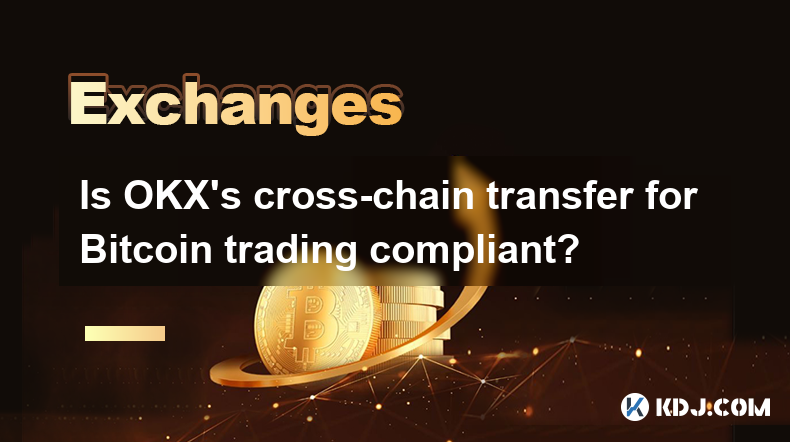
Key Points:
- OKX's cross-chain Bitcoin transfers utilize various methods, each with different compliance implications.
- Regulatory landscapes vary drastically across jurisdictions, impacting the legality of these transfers.
- Know Your Customer (KYC) and Anti-Money Laundering (AML) regulations are paramount in determining compliance.
- The specific nature of the transaction (e.g., exchange to exchange, exchange to wallet) influences compliance considerations.
- Transparency and proper record-keeping are crucial for demonstrating compliance.
Is OKX's cross-chain transfer for Bitcoin trading compliant?
The question of whether OKX's cross-chain Bitcoin transfers are compliant is complex and lacks a simple yes or no answer. Compliance hinges on several interacting factors, primarily the specific jurisdiction involved and the precise nature of the transaction. OKX, like other exchanges, operates within a multifaceted regulatory environment. While OKX might strive for compliance globally, the legal framework governing cryptocurrency transactions differs dramatically between countries.
One key aspect is the method used for the cross-chain transfer. OKX may utilize various technologies, such as the Lightning Network for faster and cheaper transactions, or other bridge solutions. The regulatory scrutiny applied to each method can differ. For instance, while the Lightning Network might be considered less regulated in some areas, its usage might still trigger AML/KYC checks depending on transaction size and counterparties.
Know Your Customer (KYC) and Anti-Money Laundering (AML) regulations are central to the compliance discussion. Most jurisdictions demand exchanges implement robust KYC/AML procedures to track user identities and prevent illicit activities. OKX's adherence to these regulations directly influences the compliance of its cross-chain Bitcoin transfers. Failure to comply can lead to significant penalties and legal repercussions.
The type of cross-chain transfer also matters. A transfer from one OKX account to another might face less scrutiny than a transfer from OKX to an external wallet or another exchange. Transfers to external wallets often involve higher risk from a regulatory perspective, as they can be harder to track and monitor for illicit activities. This increased risk necessitates more stringent compliance procedures.
Transparency is critical for demonstrating compliance. OKX needs to maintain accurate records of all cross-chain Bitcoin transactions, including user identities, transaction details, and timestamps. This meticulous record-keeping allows for audits and investigations, helping to demonstrate adherence to regulatory requirements. A lack of transparent records immediately raises red flags with regulators.
The legal definition of Bitcoin itself varies across jurisdictions. In some regions, Bitcoin is treated as property, while in others, it's considered a security or a commodity. This legal categorization significantly impacts the compliance requirements for transactions involving Bitcoin. The legal status of Bitcoin fundamentally affects the compliance framework for cross-chain transfers.
The geographic location of the user initiating and receiving the transfer is equally important. If a user resides in a jurisdiction with strict cryptocurrency regulations and engages in cross-chain transfers through OKX, the transaction is subject to those specific laws. This means that a compliant transaction in one country might be illegal in another.
Furthermore, the amount of Bitcoin transferred also plays a role. Large transactions are more likely to trigger closer scrutiny from regulatory bodies and AML systems. This is because larger transactions are often associated with higher risks of money laundering or other illegal activities.
The ongoing evolution of cryptocurrency regulations adds another layer of complexity. Regulatory landscapes are constantly shifting, with new laws and interpretations emerging frequently. OKX must adapt to these changes to ensure continued compliance. Staying abreast of these changes is crucial for maintaining compliant operations.
Finally, the specific anti-money laundering and counter-terrorist financing (AML/CFT) regulations in a particular jurisdiction dictate the compliance requirements for cross-chain transfers. These regulations vary widely globally, leading to a complex patchwork of legal frameworks. Therefore, what might be compliant in one region may be non-compliant in another.
Frequently Asked Questions:
Q: Is using OKX for Bitcoin cross-chain transfers inherently risky?
A: The inherent risk depends on several factors, including your jurisdiction, transaction size, and the destination of the transfer. While OKX aims for compliance, regulatory landscapes are constantly changing, and individual responsibility for adhering to local laws remains paramount.
Q: What should I do if I suspect a non-compliant transaction on OKX?
A: Immediately report your concerns to OKX's customer support and potentially relevant regulatory authorities in your jurisdiction. Document all relevant transaction details for your records.
Q: How can I verify OKX's compliance with relevant regulations?
A: Review OKX's published compliance statements and look for evidence of their KYC/AML procedures. Independent audits and certifications can also provide assurance, but regulatory compliance is an ongoing process.
Q: What are the potential penalties for non-compliant Bitcoin transactions through OKX?
A: Penalties can vary greatly depending on jurisdiction and the severity of the non-compliance. They could range from fines to asset seizures, and even criminal charges in some cases.
Disclaimer:info@kdj.com
The information provided is not trading advice. kdj.com does not assume any responsibility for any investments made based on the information provided in this article. Cryptocurrencies are highly volatile and it is highly recommended that you invest with caution after thorough research!
If you believe that the content used on this website infringes your copyright, please contact us immediately (info@kdj.com) and we will delete it promptly.
- Arbitrum Launches Grant Misuse Bounty Program, Paying Up to $100k per Report
- 2025-05-02 11:05:12
- BlockDAG Crosses $223M and Extends Lead with Rewarding Presale
- 2025-05-02 11:05:12
- SUI Price Faces Key Test at $4.00 Resistance Level
- 2025-05-02 11:00:12
- Liquid Restaking Token (LRT) netflows have overturned movements after EigenLayer introduced its slashing mechanism
- 2025-05-02 11:00:12
- Bitcoin Breaks Above $96,000, Signalling a Potential Market Structure Shift
- 2025-05-02 10:55:12
- Dragoin Leads the Charge with 6,700% ROI Potential: Traders Earn $DDGN with Tap-to-Earn Game
- 2025-05-02 10:55:12
Related knowledge
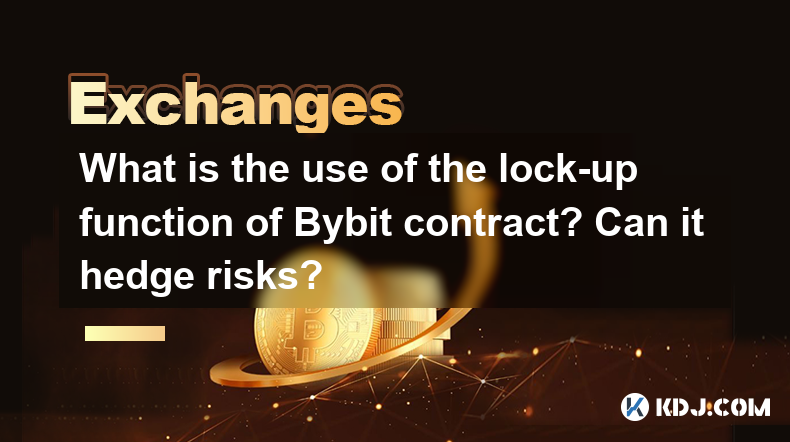
What is the use of the lock-up function of Bybit contract? Can it hedge risks?
May 01,2025 at 08:15am
The lock-up function of Bybit's contract trading platform is a feature designed to help traders manage their positions more effectively and potentially hedge against risks. This function allows traders to lock in their profits or losses at a specific price level, providing a tool to control their exposure to market volatility. In this article, we will d...

How to set up grid trading for Bybit contract? Is it suitable for volatile market?
May 01,2025 at 08:14am
Setting up grid trading for Bybit contracts involves a series of steps that can be executed through the Bybit platform. Grid trading is an automated trading strategy that involves placing buy and sell orders at regular intervals, known as grids, within a specified price range. This strategy can be particularly appealing in volatile markets, where price ...
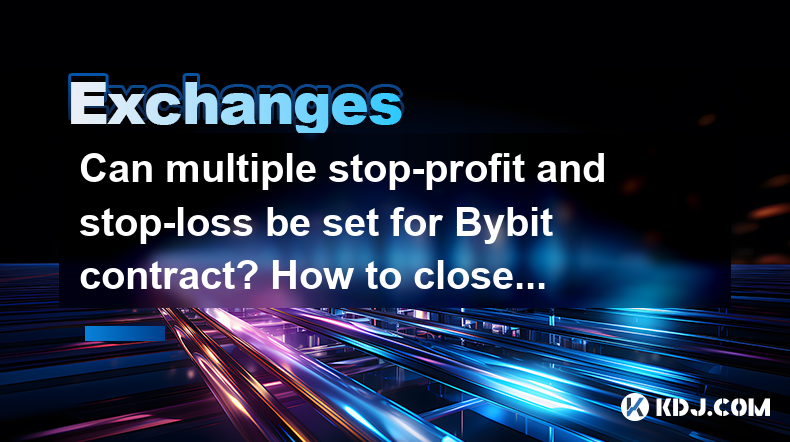
Can multiple stop-profit and stop-loss be set for Bybit contract? How to close positions in batches?
May 01,2025 at 08:14am
Can Multiple Stop-Profit and Stop-Loss be Set for Bybit Contract? How to Close Positions in Batches?Bybit, one of the leading cryptocurrency derivatives trading platforms, offers traders a variety of tools to manage their trading strategies effectively. Among these tools, stop-profit (take-profit) and stop-loss orders play a crucial role in risk managem...
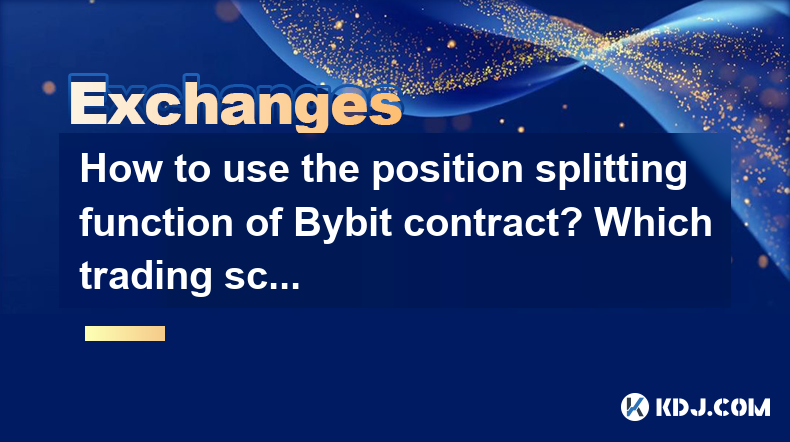
How to use the position splitting function of Bybit contract? Which trading scenarios are suitable?
May 01,2025 at 07:49pm
Introduction to Bybit's Position Splitting FunctionBybit, one of the leading cryptocurrency derivatives exchanges, offers a feature known as position splitting that allows traders to manage their open positions more effectively. Position splitting enables users to divide a single position into multiple smaller positions, which can be advantageous in var...
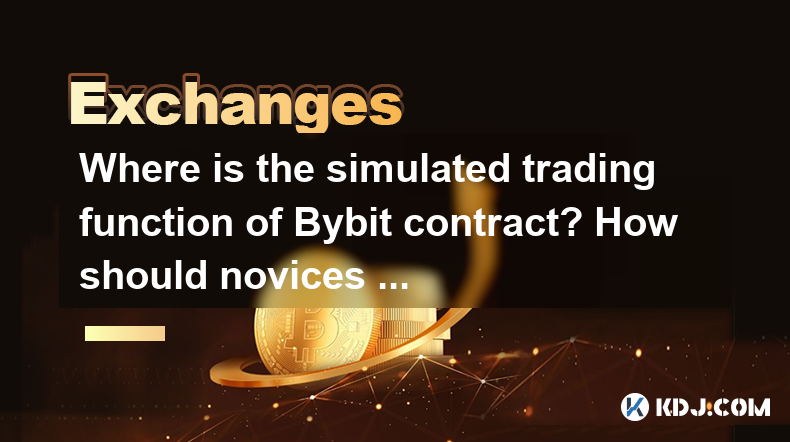
Where is the simulated trading function of Bybit contract? How should novices practice?
Apr 30,2025 at 11:14pm
Bybit, a leading cryptocurrency derivatives trading platform, offers a simulated trading function that allows users to practice trading without risking real money. This feature is particularly beneficial for novices who want to familiarize themselves with the platform and the dynamics of trading cryptocurrency contracts. In this article, we will explore...
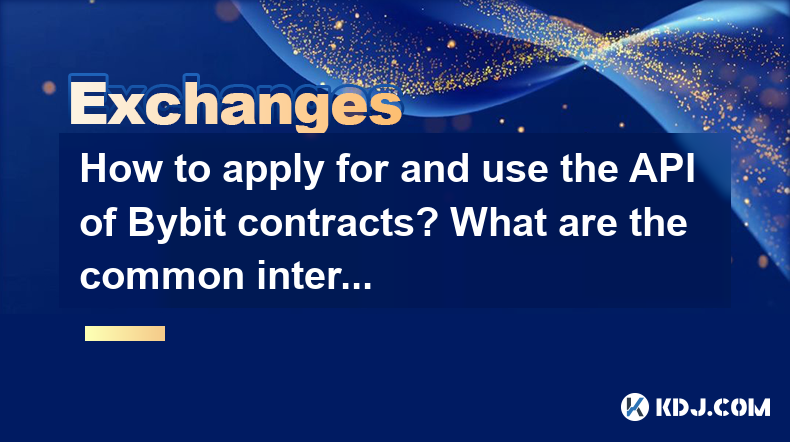
How to apply for and use the API of Bybit contracts? What are the common interface functions?
May 02,2025 at 10:57am
Bybit is a popular cryptocurrency exchange that offers a variety of trading options, including futures and perpetual contracts. To enhance trading strategies and automate processes, many traders use Bybit's API. This article will guide you through the process of applying for and using Bybit's contract API, and explore some of the common interface functi...

What is the use of the lock-up function of Bybit contract? Can it hedge risks?
May 01,2025 at 08:15am
The lock-up function of Bybit's contract trading platform is a feature designed to help traders manage their positions more effectively and potentially hedge against risks. This function allows traders to lock in their profits or losses at a specific price level, providing a tool to control their exposure to market volatility. In this article, we will d...

How to set up grid trading for Bybit contract? Is it suitable for volatile market?
May 01,2025 at 08:14am
Setting up grid trading for Bybit contracts involves a series of steps that can be executed through the Bybit platform. Grid trading is an automated trading strategy that involves placing buy and sell orders at regular intervals, known as grids, within a specified price range. This strategy can be particularly appealing in volatile markets, where price ...

Can multiple stop-profit and stop-loss be set for Bybit contract? How to close positions in batches?
May 01,2025 at 08:14am
Can Multiple Stop-Profit and Stop-Loss be Set for Bybit Contract? How to Close Positions in Batches?Bybit, one of the leading cryptocurrency derivatives trading platforms, offers traders a variety of tools to manage their trading strategies effectively. Among these tools, stop-profit (take-profit) and stop-loss orders play a crucial role in risk managem...

How to use the position splitting function of Bybit contract? Which trading scenarios are suitable?
May 01,2025 at 07:49pm
Introduction to Bybit's Position Splitting FunctionBybit, one of the leading cryptocurrency derivatives exchanges, offers a feature known as position splitting that allows traders to manage their open positions more effectively. Position splitting enables users to divide a single position into multiple smaller positions, which can be advantageous in var...

Where is the simulated trading function of Bybit contract? How should novices practice?
Apr 30,2025 at 11:14pm
Bybit, a leading cryptocurrency derivatives trading platform, offers a simulated trading function that allows users to practice trading without risking real money. This feature is particularly beneficial for novices who want to familiarize themselves with the platform and the dynamics of trading cryptocurrency contracts. In this article, we will explore...

How to apply for and use the API of Bybit contracts? What are the common interface functions?
May 02,2025 at 10:57am
Bybit is a popular cryptocurrency exchange that offers a variety of trading options, including futures and perpetual contracts. To enhance trading strategies and automate processes, many traders use Bybit's API. This article will guide you through the process of applying for and using Bybit's contract API, and explore some of the common interface functi...
See all articles





















































































